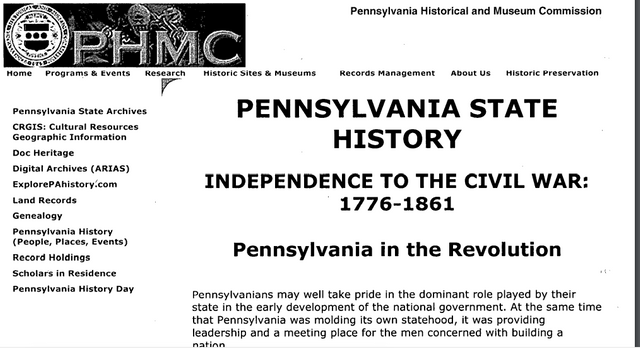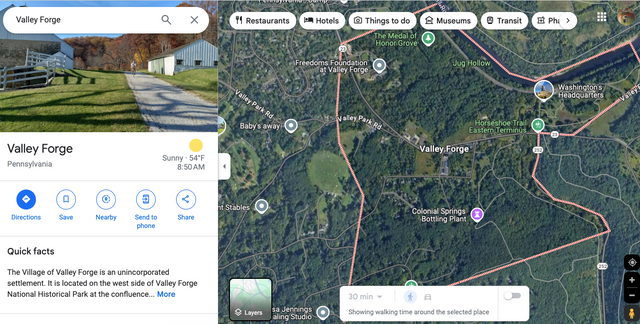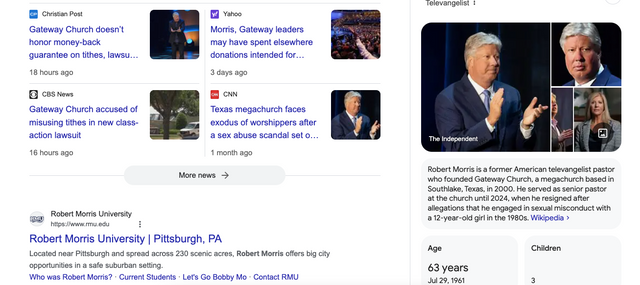According to the Nuclear Regulatory Commission at .gov
Despite high social position and an excellent education,
he shocked his upper-class associates by his conversion to the beliefs
of the Society of Friends, or Quakers, then a persecuted sect. He used
his inherited wealth and rank to benefit and protect his fellow
believers.Despite the unpopularity of his religion, he was socially
acceptable in the king's court because he was trusted by the Duke of
York, later King James II.In April 1681, Penn made his cousin William Markham deputy governor
of the province and sent him to take control. In England, Penn drew up
the First Frame of Government, his proposed constitution for
Pennsylvania. Padopted the Great Law, a humanitarian code
which became the fundamental basis of Pennsylvania law and which
guaranteed liberty of conscience.By the time of Penn's
return to England late in 1684, the foundations of the Quaker Province
were well established.
Did they time travel lol as this gov doc jumps a few centuries. . .
In 1984, William Penn and his wife Hannah
Callowhill Penn were made the third and fourth honorary citizens of
the United States, by act of Congress.On May 8, 1985, were granted honorary citizenship of the Commonwealth of the Pennsylvannia
From its beginning, Pennsylvania ranked as a leading agricultural area
and produced surpluses for export, adding to its wealth. By the 1750s,
an exceptionally prosperous farming area had developed in
southeastern Pennsylvania.Wheat and corn were the leading crops
The abundant natural resources of the colony made for early
development of industries.Arts and crafts, as well as home
manufactures, grew rapidly.Sawmills and gristmills were usually the
first to appear, using the power of the numerous streams.Textile
products were spun and woven mainly in the home, though factory production was not unknown.Shipbuilding became important on the Delaware.
The province early gained importance in iron manufacture,
producing pig iron as well as finished products. Printing, publishing, and the related industry of papermaking, as well as tanning, were significant industries.The Pennsylvania long rifle was an adaptation of a German hunting rifle developed in Lancaster County.
Its superiority was so recognized that by 1776 gunsmiths were duplicating it in Virginia, Georgia, North Carolina, and Maryland. * The Conestoga wagon was also developed in Lancaster County. Capable of carrying as much as four tons,
it was the prototype for the principal vehicle for American westward migration, the prairie schooner.
Commerce and Transportation
The rivers were important as early arteries of commerce and were soon supplemented by roads in the southeastern area. * Stagecoach lines by 1776 reached from Philadelphia into the southcentral region.
Trade with the Indians for furs was important in the colonial period.
Later, the transport and sale of farm products to Philadelphia and Baltimore, by water and road, formed an important business.
Philadelphia became one of the most important centers in the colonies for the conduct of foreign trade and the commercial metropolis of an expanding hinterland.
By 1776, the province's imports and exports were worth several million dollars.
Philadelphia was known in colonial times as the "Athens of America"because of its rich cultural life.
An academy which held its first classes in 1740 became the College of Philadelphia in 1755, and
ultimately grew into the University of Pennsylvania.It was the only nondenominational college of the colonial period.
The arts and sciences flourished, and the public buildings of Philadelphia were the marvel of the colonies.
By 1776, the Province of Pennsylvania had become the third largest English colony in America, though next to the last to be founded.
Philadelphia had become the largest English-speaking city in the world next to London.
The American Revolution had urban origins, and Philadelphia was a center of
ferment. Groups of artisans and mechanics, many loyal to Benjamin
Franklin, formed grassroots leadership. Philadelphia was a center of resistance to the Stamp Act (1765) andmoved quickly to support Boston in opposition to the Intolerable Acts, in 1774.
PENNSYLVANIA STATE
INDEPENDENCE TO THE CIVIL WAR:
1776-1861
Pennsylvania in the Revolution

Pennsylvanians may well take pride in the dominant role played by their state in the early development of the national government.
At the same time that Pennsylvania was molding its own statehood, it was providing leadership and a meeting place for the men concerned with building a nation.
Declaration of Independence
The movement to defend American rights grew into the movement for independence in the meetings of the Continental Congress at
Carpenters' Hall and the State House (Independence Hall) in
Philadelphia.
The spirit of independence ran high, as shown by spontaneous declarations of frontiersmen in the western areas and by
the political events which displaced the old provincial government.
The War for Independence
Pennsylvania troops took part in almost all the campaigns of the
Revolution.
A rifle battalion joined in the siege of Boston in August
Others fought bravely in the ill-fated Canadian campaign of
1776 and in the New York and New Jersey campaigns.
The British naturally considered Philadelphia of key importance and, in the summer of 1777, invaded the state and captured the capital.
The battles of Brandywine, Germantown, and Whitemarsh were important engagements of this period.
Following these battles, Washington went into winter quarters at Valley Forge from December 1777 to June 1778.

News of the French alliance, which Benjamin Franklin had
helped to negotiate, and the adoption of new strategy caused the
British to leave Philadelphia in the spring of 1778.The products of Pennsylvania farms, factories, and mines were
essential to the success of the Revolutionary armies.
At Carlisle aContinental ordnance arsenal turned out cannons, swords, pikes, and muskets.
*The state actively encouraged the manufacture of
gunpowder. Pennsylvania's financial support, both from its
government and from individuals, was of great importance.
- By 1780, the state had contributed more than $6 million to the Congress and,
- when the American states had reached financial exhaustion,
- 90 Philadelphians subscribed a loan of £300,000 to supply the army.
- Later, in 1782, the Bank of North America was chartered to support government fiscal needs.
- Robert Morris and Haym Salomon were important financial supporters of the Revolution.
Morris also worked closely with revolutionary financier and Polish-born Jewish immigrant Haym Salomon to fund the Patriot cause for much of the war. When Washington needed gunpowder, Morris smuggled it past British blockades.
When Salomon arrived in America in 1775 he immediately embraced the Patriot cause. Shortly after he arrived in New York City, he joined that city’s branch of the Sons of Liberty. Not long thereafter he established a brokerage house for international trade. For much of the war he worked alongside Robert Morris to help finance the Patriot cause.
In 1776, he was arrested by the British and accused of being an American spy. After eighteen months of incarceration, where he served as a translator for German mercenaries, he was pardoned. While imprisoned he worked to convince Hessians to adopt the American cause and encouraged British soldiers to desert.
Arrested by the British again in 1778, Salomon, this time was sentenced to execution.
Managing to escape his captors he made his way to Philadelphia, bringing his family with him. Finding a firm footing in the American capital, Salomon once more entered the world of finance, starting a new brokerage house.
Fluent in French, Salomon became the logical choice to serve as the American agent to the French counsel.
Once France officially entered the war, he became the American paymaster for the French that served in the United States.
His work with Morris began in earnest in 1781 when Morris was appointed Superintendent of Finance for the United States. * Between 1781-1784 he personally loaned to the American cause $650,000 helping the nation to some sense of financial stability.
With the Yorktown Campaign in full swing, as the joint American-French Army moved south from New York to capture British General Lord Cornwallis’ army,
Salomon made his most significant contribution to the American cause.
The Continental Troops had yet to be paid. Washington had no money and neither did Congress.
Rumbles of mutiny spread in the American ranks.
Washington estimated that he needed $20,000 to conduct operations, feed, provision, and clothe his army.
Robert Morris wrote Washington that there was no money no be had.
As a rejoinder, Washington demanded that Morris, “Send for Haym Salomon.”
Salomon once again put to work his exceptional financial skills securing the necessary loans for the cash that Washington needed.
Thus, Washington and his French allies were able to defeat the British at Yorktown, Virginia and bring an end to eight years of fighting.
Sadly, Salomon died four years later, at the age of 44, a pauper in debtor’s prison. The government which he had helped to shore up its finances never could repay the debts it owed to him.
Robert Morris,
NOT This one,

Robert Morris used his financial expertise and shipping connections to raise money and supplies for the Continental Army and navy.
He secured loans with his own personal credit, and his firm made money selling munitions to the army.
Morris's personal contributions to the war effort are estimated to be $79 million out of the total cost of $101 million.
From 1781 to 1784, he served as the Superintendent of Finance of the United States, becoming known as the "Financier of the Revolution."
Along with Alexander Hamilton and Albert Gallatin, he is widely regarded as one of the founders of the financial system of the United States.
Born in Liverpool, Morris was brought to North America by his father when he was 13 years old, quickly becoming a partner in a successful shipping firm based in Philadelphia.
In the aftermath of the French and Indian War, Morris joined with other merchants in opposing British tax policies such as the 1765 Stamp Act.
By 1775 he was the richest man in America.
After the outbreak of the American Revolutionary War, he helped procure arms and ammunition for the revolutionary cause, and
- in late 1775 he was chosen as a delegate to the Second Continental Congress.
As a member of Congress, he served on
the Secret Committee of Trade, which handled the procurement of supplies,
the Committee of Correspondence, which handled foreign affairs, and
the Marine Committee, which oversaw the Continental Navy.
Morris was a leading member of Congress until he resigned in 1778.
Morris believed that the national government would be unable to achieve financial stability without the power to levy taxes and tariffs,
but he was unable to convince all thirteen states to agree to an amendment to the Articles of Confederation.
Frustrated by the weakness of the national government, Morris resigned as Superintendent of Finance in 1784.
Morris declined Washington's offer to serve as the nation's first Treasury Secretary, instead suggesting Alexander Hamilton for the position.
In the Senate, Morris supported Hamilton's economic program and aligned with the Federalist Party.
During and after his service in the Senate, Morris went deeply into debt through speculating on land, leading into the Panic of 1796–1797.
Unable to pay his creditors, he was confined in the Prune Street debtors' apartment adjacent to Walnut Street Prison from 1798 to 1801.
After being released from prison, he lived a quiet, private life in a modest home in Philadelphia until his death in 1806.
The Constitution of 1776
The convention superseded the old government completely,
established a Council of Safety to rule in the interim, and drew up the
first state constitution, adopted on September 28, 1776. This
provided an assembly of one house and a supreme executive council
instead of a governor. The Declaration of Rights section has been
copied in subsequent constitutions without significant change.
Many patriot leaders were bitterly opposed to the new Pennsylvania constitution.
- Led by such men as John Dickinson, James Wilson,
Robert Morris, and Frederick Muhlenberg, they carried on a long fight with the Constitutional party, a radical group. - Joseph Reed, George Bryan, William Findley, and other radicals governed Pennsylvania until 1790.
- Their most noteworthy accomplishments were the act for
the gradual abolition of slavery (1780) and an act of 1779 which took over the public lands owned by the Penn family (but allowed them some compensation in recognition of the services of the founder).
The Constitution of 1790
- By 1789, the conservatives felt strong-enough to rewrite the stateconstitution, and the Assembly called a convention to meet in November.
- In the convention, both the conservative majority and the radical minority showed a tendency to compromise and to settle their differences along moderate lines.
- As a result, the new constitution embodied the best ideas of both parties and was adopted with little objection.
- It provided for a second legislative house, the State
Senate, and for a strong governor with extensive appointing powers.
Pennsylvania and the United States Constitution
Because of a lack of central power, as well as financial difficulties, the Articles of Confederation could no longer bind together the newly independent states.
- As a result, the Federal Constitutional Convention
met in Philadelphia in 1787.
The structure that evolved remains the basis of our government today.
The Pennsylvania Assembly sent eight delegates to the Federal
Convention.
Four of these had been signers of the
Declaration of Independence.
Pennsylvania's delegation supported
every move to strengthen the national government and signed the finished Constitution on September 17.
The conservatives in the Pennsylvania Assembly took swift action to call a ratifying convention, which met in Philadelphia on November 21.
- The Federalists, favoring ratification, elected a majority of delegates and, led by Wilson, made Pennsylvania the second state to ratify, on December 12, 1787.
See more of the back and forth in sources.
More Sources,
https://www.history.com/news/robert-morris-financier-revolutionary-war